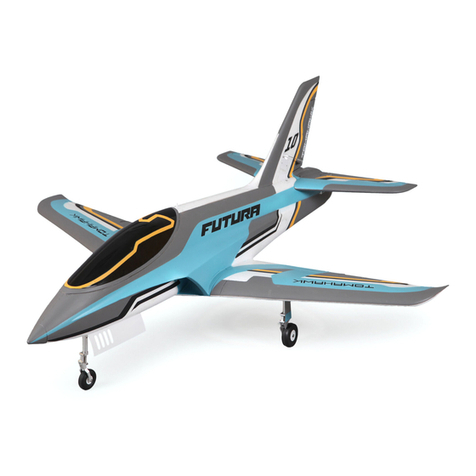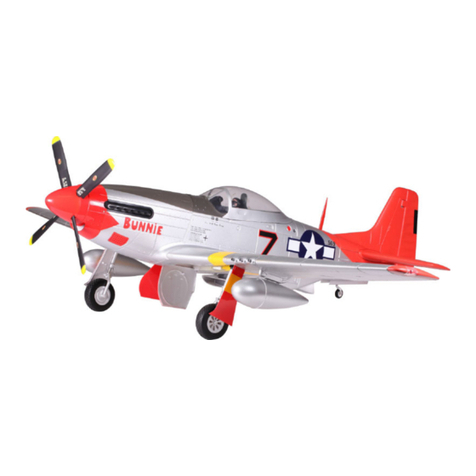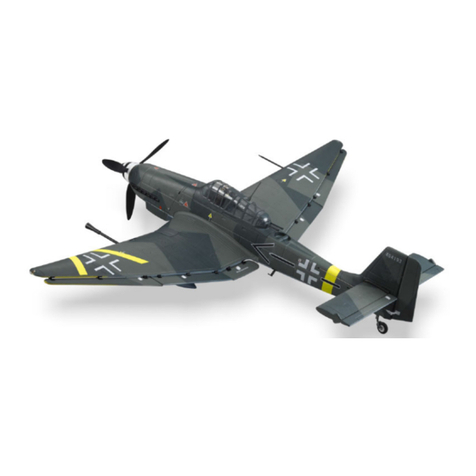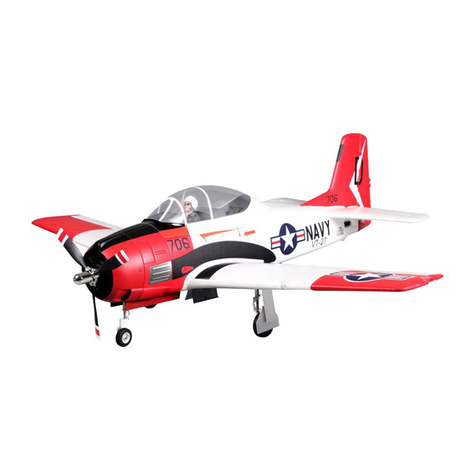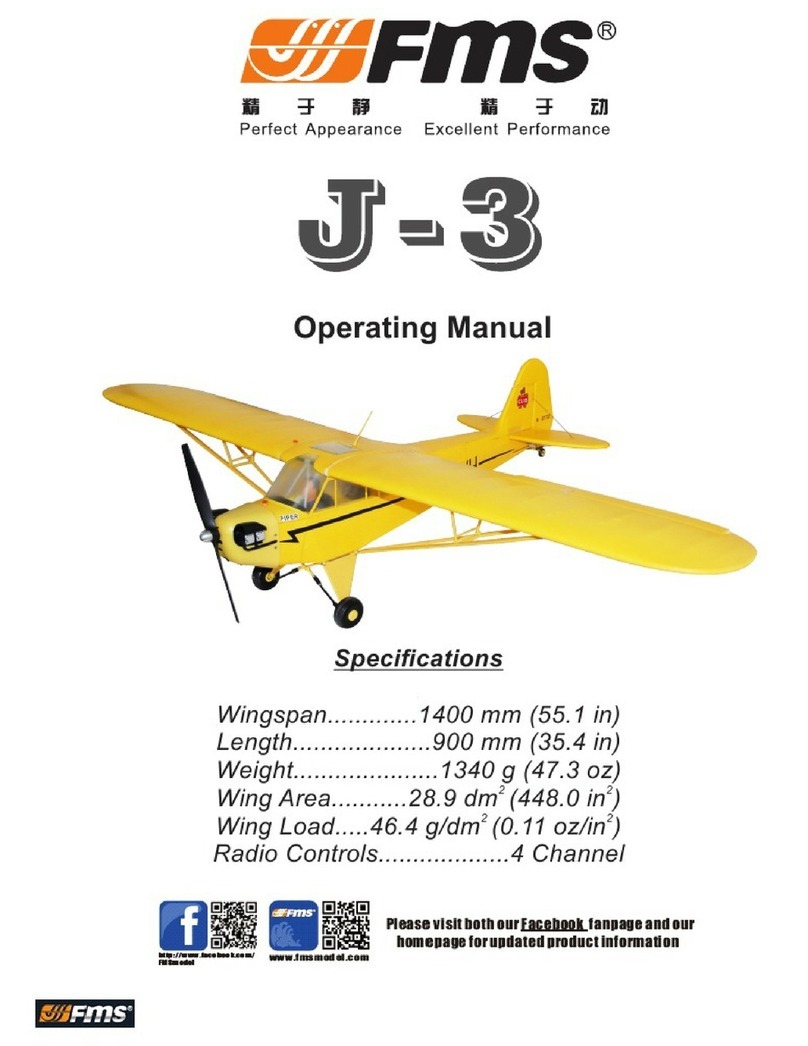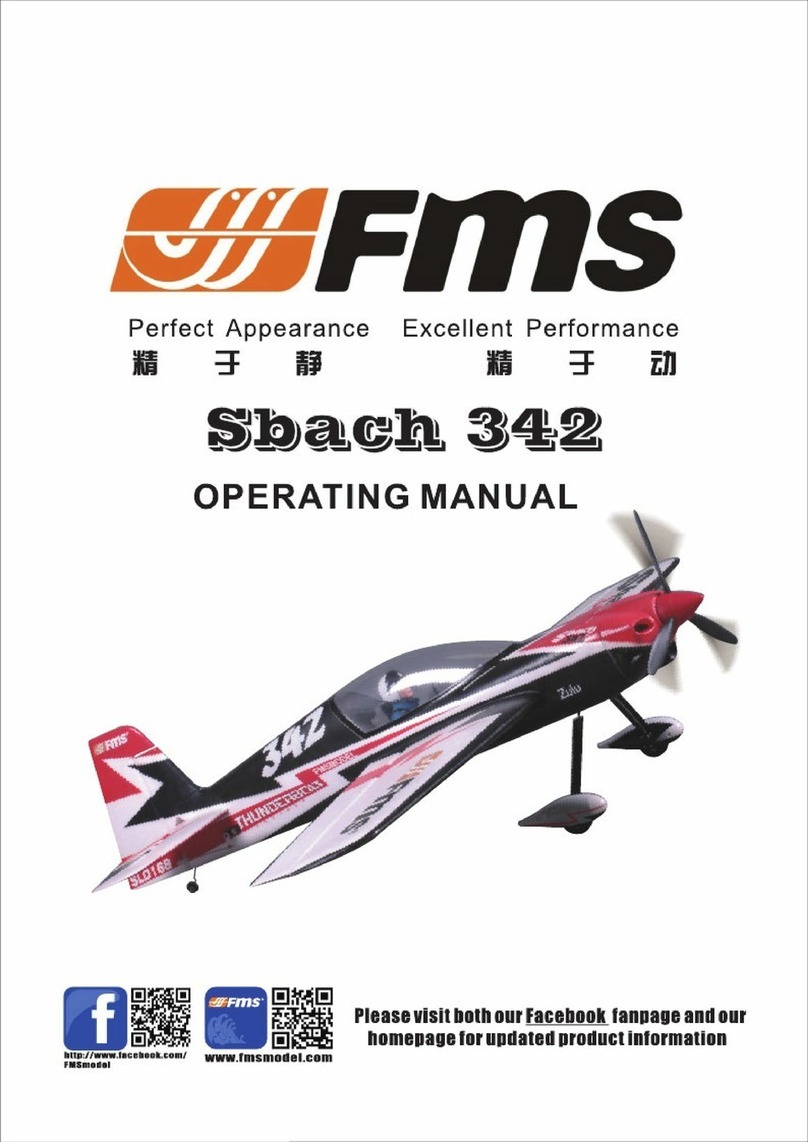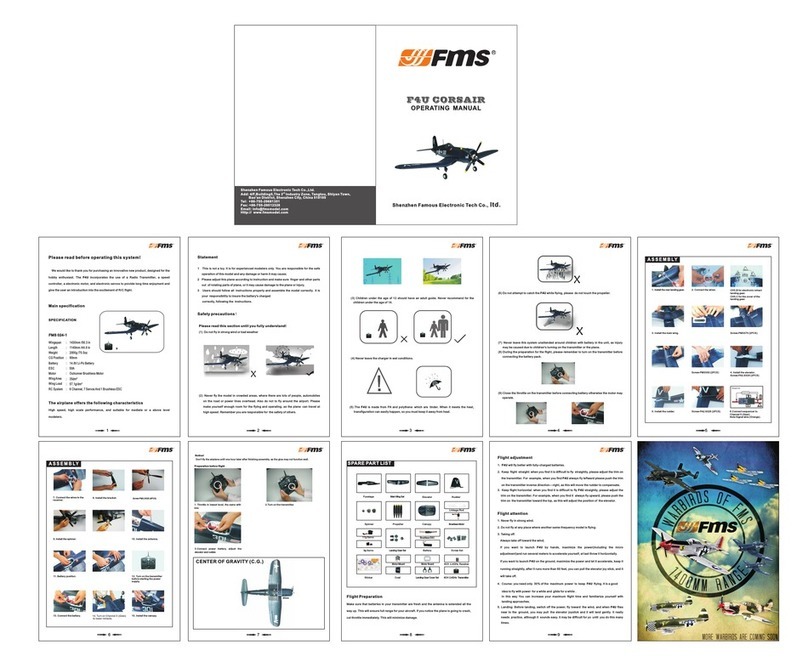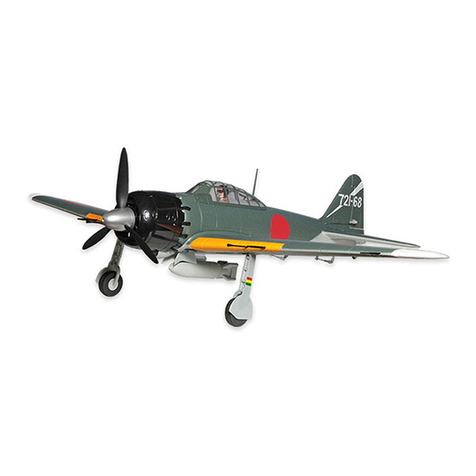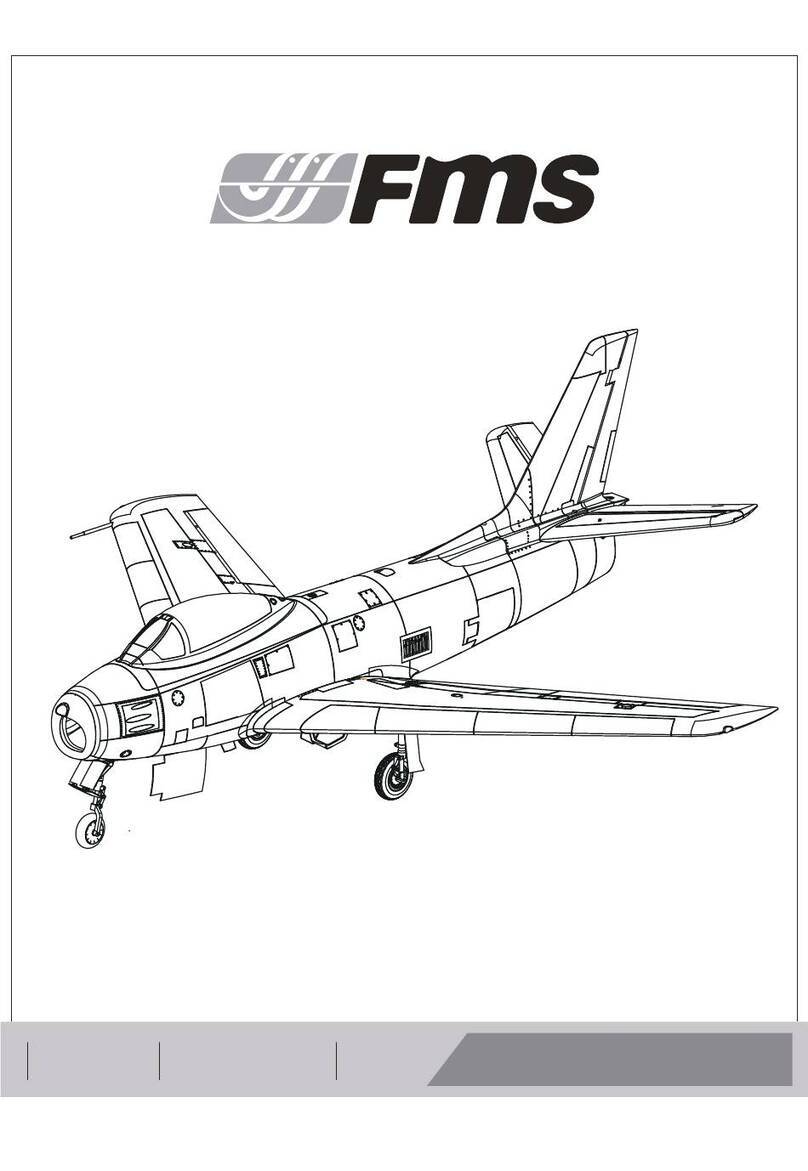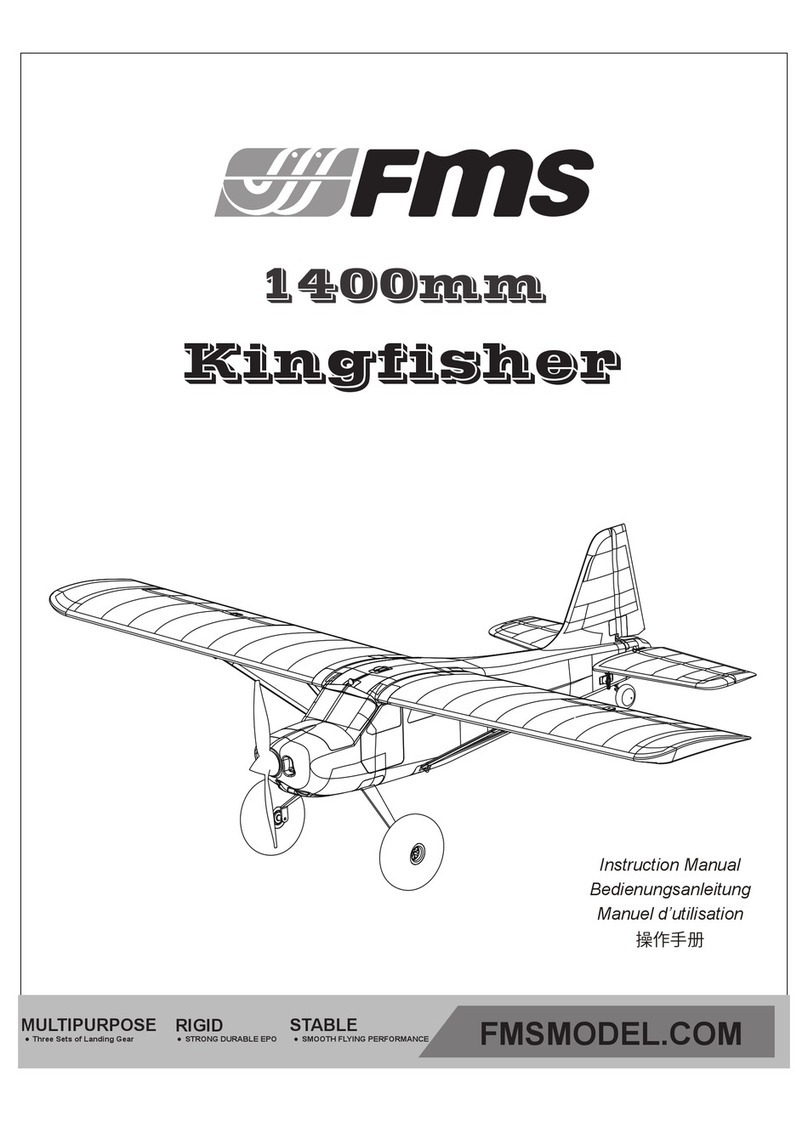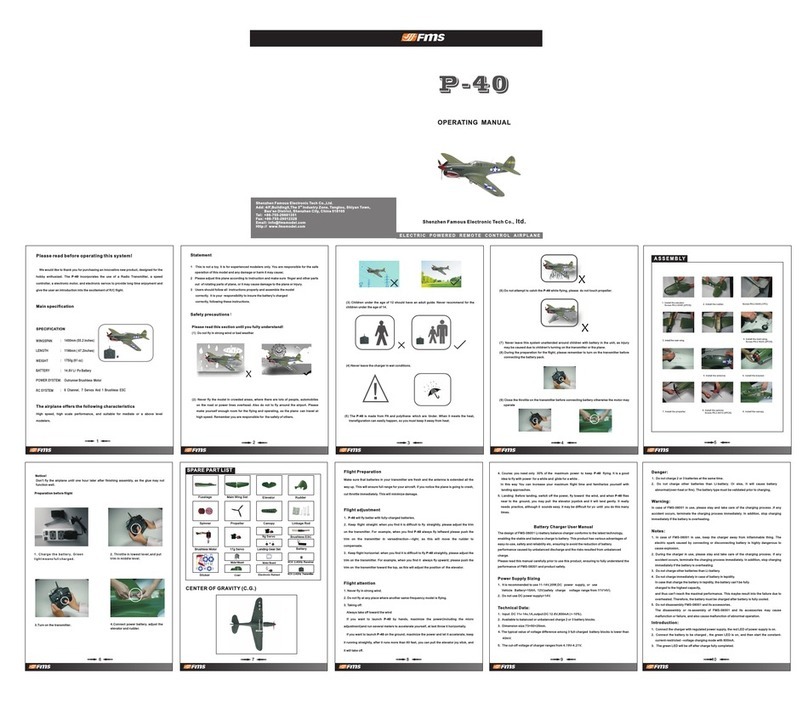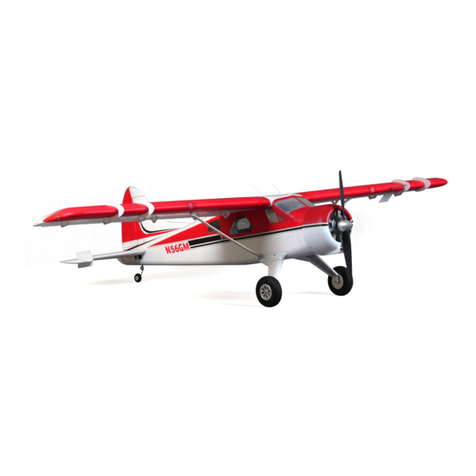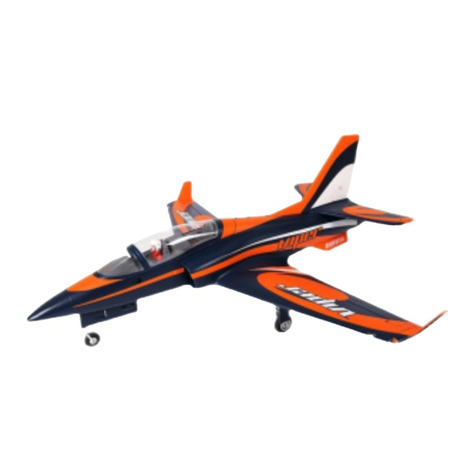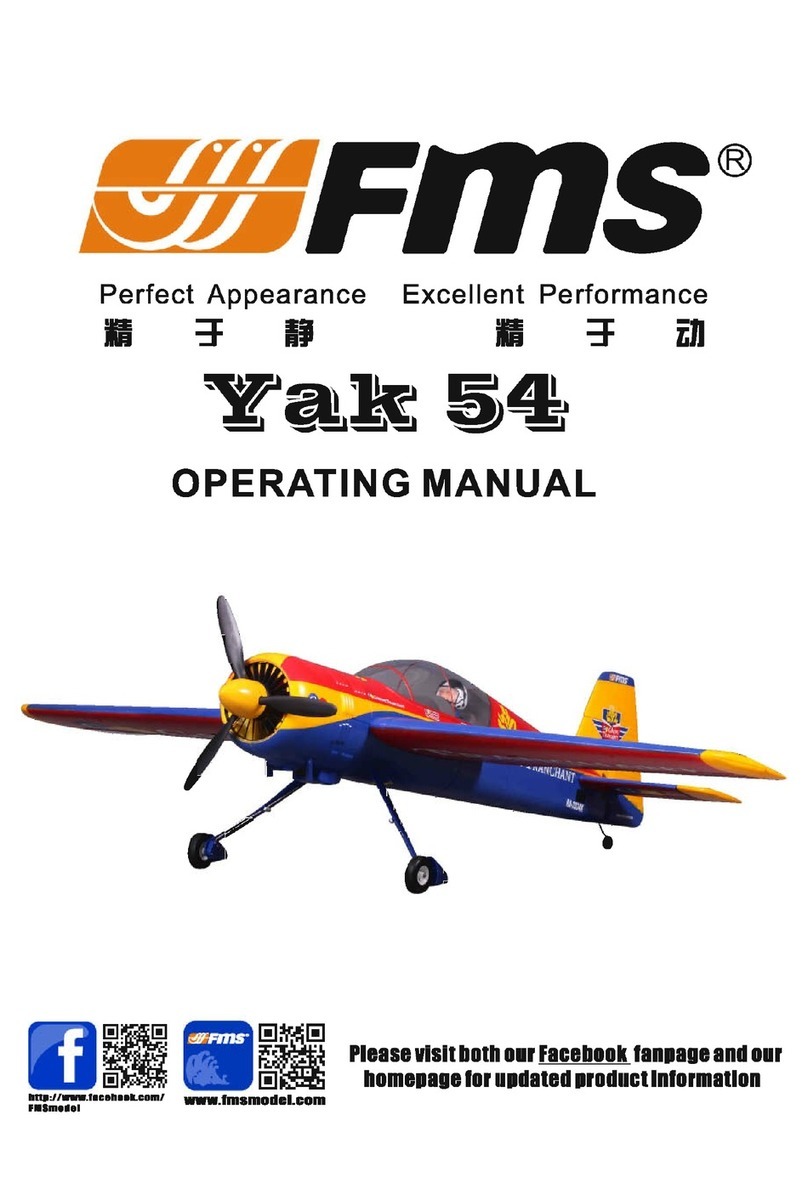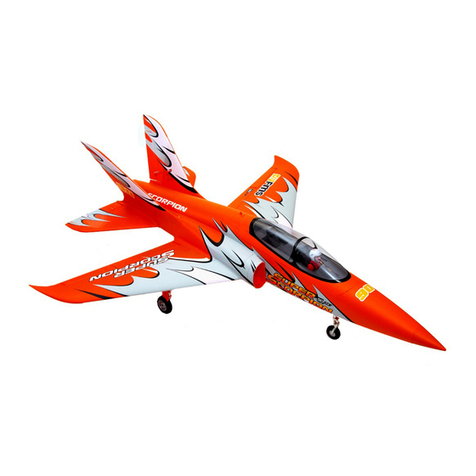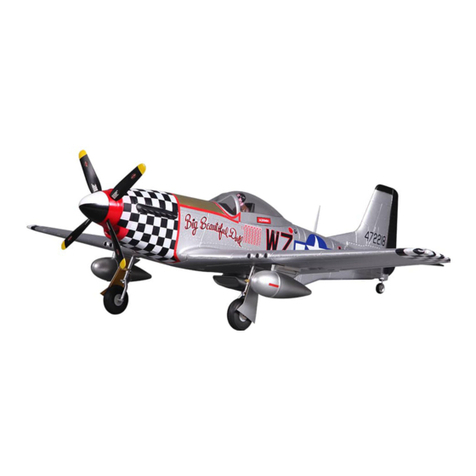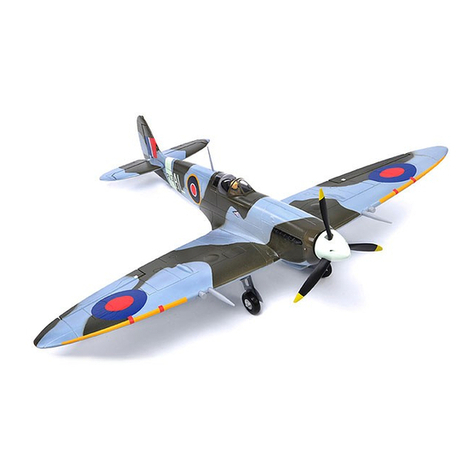
3
Wing span:2300mm /91.4in
Overall length: 1290mm /50.8in
Flying weight: ~ 1150g
Wing load:30.7g/dm²
Wing area: 37.5dm²
Servo: 9g Servo x 6
Recommended battery: Li-Po 11.1V 1300mAh 25C
EN
Motor size: 4018-kv1900
ESC:30A
Introduction
Introduction
Kit contents
Model assembly
Battery installation
Receiver diagram
Get your model ready to fly
Clevis installation
Control horn and servo arm settings
Center of gravity(CG)
Before flying the model
Flying course
Troubleshooting
Spare parts list content
Brushless ESC introduction ·
T
Table of contents
·····························································
·····
3
·························································3
·······················································4
············································· ········ 7
·········································
··
········ 7
································
······························
··
·····
·····
·····
7
······················································8
················································ 9
············································· 9
·························································10
······················································11
··································
······································
··········11
12
9
Before assembly, please inspect the contents of the kit. The
diagram opposite details the contents of the kit with labels.
If any parts are missing or defective, please identify the
name or part number (refer to the spare parts list near the
end of the manual) then contact your local shop or email us:
Kit contents
Specifications
The MDM 1 Fox is a composite unlimited aerobatic glider. So
impressive that at its first public unveiling it managed to place
first in the World Championships! Since then it has become a
podium regular throughout the world. Sleek and efficient with
fantastic unlimited aerobatic flight, it is an excellent model for
FMS to replicate.
This exciting aerobatic glider from FMS is made with
impact-absorbing and resilient EPO foam. The mold quality is
sublime, contributing to both the efficiency and great looks of
the plane. Combined with a high-powered brushless motor and
LiPo battery, the FMS 2300mm Fox, gives the budding modeler
a new level of high performance excitement.
The FMS Fox features built-in reinforcing rods and plates in its
wings, a horizontal stabilizer and vertical stabilizer that are a
great support for overall strength and a very compact airframe,
adding further to the enjoyment of this model.
Fox V2 has been upgraded with new features such as flaps and
ball links, which enable the Fox to be a full house glider capable
of camber, crow, and reflex. Other new features include a
redesigned motor mount, revised horizontal stabilizer, improved
wings and a refined fuselage, enabling the FOX to perform
various gliding movements with increased confidence.
Positive and negative loops, stall turns, point rolls and inverted
flight are all easily performed with this model and it will also
perform excellently simply hunting for thermals or slope flying,
making it suitable for a wide range of pilots.
Features:
· Power configuration: Motor 4018-KV900, 30A ESC (with brake
function), 9g servo x 6pcs;
· Built-in reinforcement rods and plates in mainwing, horizontal
stabilizer and vertical stabilizer for improved aircraft strength;
· Ball link connectors are used replacing the traditional clevis;
· Huge 2300mm wingspan provides stable flights and long fly
times. A perfect platform for aerial photography;
· Removable wings for easy transportation;
EPO foam construction.
A: Fuselage
B: Main wing set
C: Horizontal stabilizer
D: Wing tube
E: Screws Set (KA1.7*7x13、HKM3*32x3、KA2.0*12x3)
F: Control horns and gaskets
G: Linkage rods
A.
B.
C. E. F.
D. G.
